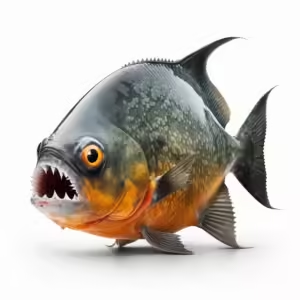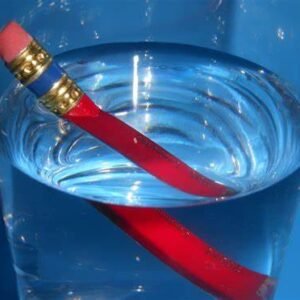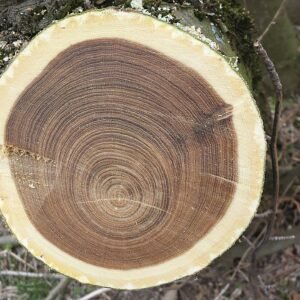Fishing nets have been a fundamental tool in the world of fishing for centuries. From ancient civilizations to modern-day anglers, these versatile tools have evolved significantly. Whether you’re a professional fisherman, a recreational angler, or simply interested in the mechanics behind fishing, understanding fishing nets can enhance your knowledge and appreciation of this essential gear. This article explores the various types of fishing nets, their uses, and current trends, based on the latest information from both Google and YouTube.
The Basics of Fishing Nets
What is a Fishing Net?
A fishing net is a mesh tool designed to catch fish and other aquatic creatures. Its design consists of a webbed fabric made from various materials, which traps fish when they come into contact with it. Fishing nets come in various shapes and sizes, tailored to different fishing methods and environments.
Types of Fishing Nets
Fishing nets can be categorized based on their design, purpose, and how they are used. Here are some of the most common types:
1. Cast Nets
Cast nets are circular nets that are thrown by hand. They have a weighted edge that ensures they sink quickly and spread out when cast. Cast nets are typically used in shallow waters to catch baitfish.
2. Gill Nets
Gill nets are vertical nets with a mesh that is designed to entangle fish by their gills.
3. Seine Nets
Seine nets are large, rectangular nets with floats on the top edge and weights on the bottom. They are dragged through the water to encircle schools of fish. Seine nets are often used in commercial fishing to catch large quantities of fish.
4. Trawl Nets
Trawl nets are large, cone-shaped nets that are towed behind boats. They are used in deep-sea fishing to catch large quantities of fish and other marine creatures. Trawl nets come in various designs, including bottom trawl nets and midwater trawl nets.
5. Dip Nets
Dip nets are hand-held nets used for catching fish from a small area, such as from a pond or stream. They are commonly used by recreational anglers for catching baitfish or small fish.
How Fishing Nets Are Used
Commercial Fishing
In commercial fishing, nets are crucial for harvesting large quantities of fish efficiently. Techniques such as trawling and seining are employed to capture fish from large bodies of water. The choice of net depends on the type of fish targeted and the fishing environment.
Recreational Fishing
For recreational anglers, fishing nets are used to aid in catching and handling fish. Cast nets and dip nets are popular among hobbyists for their ease of use and effectiveness in shallow waters. These nets help anglers catch baitfish and handle fish caught during a fishing expedition.
Aquaculture
In aquaculture, fishing nets are used to manage fish farms and ponds. Nets help in controlling the movement of fish, feeding them, and protecting them from predators. The design of these nets ensures that fish are contained while allowing water flow.
Latest Trends in Fishing Nets
Sustainable Fishing Practices
With growing environmental concerns, there is an increasing emphasis on sustainable fishing practices. Modern fishing nets are being designed to minimize bycatch and reduce environmental impact. Innovations include the use of biodegradable materials and designs that allow smaller fish to escape.
Advanced Materials
Fishing nets are now being made from advanced materials such as high-strength polymers and nylon blends. These materials offer enhanced durability and resistance to wear and tear. Additionally, some nets feature UV-resistant coatings to extend their lifespan.
Smart Fishing Nets
Technology is making its way into fishing nets with the development of smart nets equipped with sensors. These sensors can monitor various parameters such as water temperature and fish movements, providing valuable data for both commercial and recreational fishing.
Customization and Versatility
Fishing nets are increasingly being customized to meet specific needs. Anglers and fishermen can now choose from a variety of net sizes, mesh types, and handle designs to suit their particular fishing techniques and environments.
Choosing the Right Fishing Net
When selecting a fishing net, consider the following factors:
Purpose
Determine the primary use of the net, whether it is for commercial fishing, recreational fishing, or aquaculture. Each use requires a different type of net with specific features.
Mesh Size
The mesh size of the net affects the size of the fish that can be caught. Smaller mesh sizes are suitable for catching smaller fish, while larger mesh sizes are used for larger species.
Material
Choose a net made from durable and high-quality materials. The material should be resistant to wear, UV damage, and environmental conditions.
Design and Size
Select a net with a design and size that match your fishing needs. For example, cast nets are ideal for shallow waters, while trawl nets are better for deep-sea fishing.
FAQs
What is a fishing net?
A fishing net is a mesh tool designed to catch fish and other aquatic creatures. It typically consists of a webbed fabric made from materials like nylon, polyethylene, or other synthetic fibers, which traps fish when they become entangled. Fishing nets come in various shapes and sizes, each tailored to different fishing methods and environments.
What are the different types of fishing nets?
Fishing nets vary widely in design and purpose. Common types include cast nets, which are circular nets thrown by hand; gill nets, which trap fish by their gills; seine nets, which are large, rectangular nets used to encircle schools of fish; trawl nets, which are cone-shaped nets towed behind boats; and dip nets, which are hand-held for catching fish from a small area.
How do cast nets work?
Cast nets are designed to be thrown by hand and spread out in a circular shape. They have weighted edges that cause the net to sink quickly and trap fish. When the net is thrown, it opens up and sinks, then is pulled back in to gather the fish that have been caught.
What is the purpose of gill nets?
Gill nets are used to catch fish by their gills. They are set vertically in the water and have mesh sizes that allow fish to get their heads through but not their bodies. The fish become trapped by their gills, making it difficult for them to escape.
How are seine nets used?
Seine nets are used to catch fish by encircling them. They are typically deployed from boats or by hand and dragged through the water to surround a school of fish. The net is then pulled in to capture the fish within the enclosed area.
What are trawl nets and how do they function?
Trawl nets are large, cone-shaped nets that are towed behind fishing boats. They are designed to capture large quantities of fish and other marine creatures from the ocean floor or midwater. There are different types of trawl nets, including bottom trawl nets and midwater trawl nets, each suited for different fishing depths and targets.
What materials are fishing nets made from?
Fishing nets are commonly made from materials like nylon, polyethylene, and other synthetic fibers. These materials are chosen for their strength, durability, and resistance to environmental factors like UV rays and saltwater.
How have fishing nets evolved over time?
Fishing nets have evolved from simple, hand-woven designs used by ancient civilizations to sophisticated, high-tech tools used in modern fishing. Advances in materials, such as the use of stronger and more durable synthetics, as well as innovations in net design, have significantly improved their effectiveness and longevity.
Conclusion
Fishing nets are indispensable tools in the world of fishing, offering a range of designs and applications to suit various needs. From commercial fishing to recreational angling, the evolution of fishing nets continues to reflect advancements in technology and sustainable practices. Understanding the different types of nets and their uses can enhance your fishing experience and contribute to more responsible fishing practices. Whether you’re casting a net from a boat or dipping it into a stream, the right fishing net can make all the difference in your fishing success.
To read more, Click Here.





